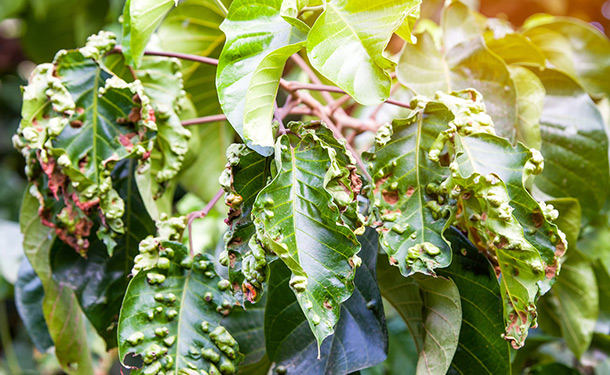
Trees might not be able to talk but they can still tell you when something is wrong in their own ways. There are several warning signs that your tree is under stress. Tree stress can really damage trees making these signs that can’t be ignored.
Types of Tree Warning Signs
There are two kinds of warning signs; acute and chronic. Acute symptoms appear quite quickly and are easy to spot. Chronic symptoms are more difficult to spot and affect the tree for longer, even after you replenish them with some water.
One of the main acute symptoms of tree stress is the wilting and scorching of trees and leaves. Scorching is where the edges of a leaf turn brown as they don’t have enough water. This sign is recognized by most plant enthusiast and a good indication that the tree needs more water.
Chronic symptoms are things like a tree growing slower and leaves being smaller or spotted. This is why it takes longer to recognize them. Can you really tell if the leaves are a little smaller, or if the tree isn’t growing much? Certain types of tree also have their own unique chronic symptoms. Red Maple trees, for example, go through early fall colors when they become stressed. Trees undergoing chronic stress are also susceptible to pest damage.
Tree Care During Tree Stress
It’s possible to try and care for your trees on their own when they become stressed. One good way to do this is by strengthening the roots and improving the quality of your soil through fertilization and mulching. If the roots aren’t getting their nutrients through water then they need some other way to get it. Sometimes keeping a tree watered when you spot the leaves browning may actually be enough to keep the damage at bay.
If you notice that your tree isn’t growing fast enough then you need to take action before the damage becomes too bad. Water it and spread the water out to encourage the tree to extend and use all of its roots to take it in. Trees need healthy and strong roots in order to thrive and live.
Early Warning Signs
Knowing these early warning signs and helping trees when you can is important to the environment, as well as to the trees. We need trees to survive and in areas where droughts are bad, as many trees as possible need to be saved. Preventing long lasting damage is one of the ways to save as many trees as possible through keeping the damage to a minimum.
Call a Tree Care Professional to Help
Unfortunately not every tree can be saved. Sometimes the tree is just too damaged and you have to know when to give up and call in an arborist or tree service professional. They will assess the health of your trees (some are willing to do this for free) and offer advice on what to do next. They know the most about what to do with trees and can give you a plan to help your tree recover from the damage. In the event the damage is irreversible they can help you safely dispose of it so that you can focus your water and efforts on the trees that can survive.
Focusing your efforts and recognizing what trees can and can’t be saved is important to prevent you from wasting time and resources. Concentrate on the strong trees that have the most chance of surviving a drought with the least amount of help from you.
Go to thetreecareguide.com for more resources and tree care information.